Without Russia: China as the main adversary of the United States at sea
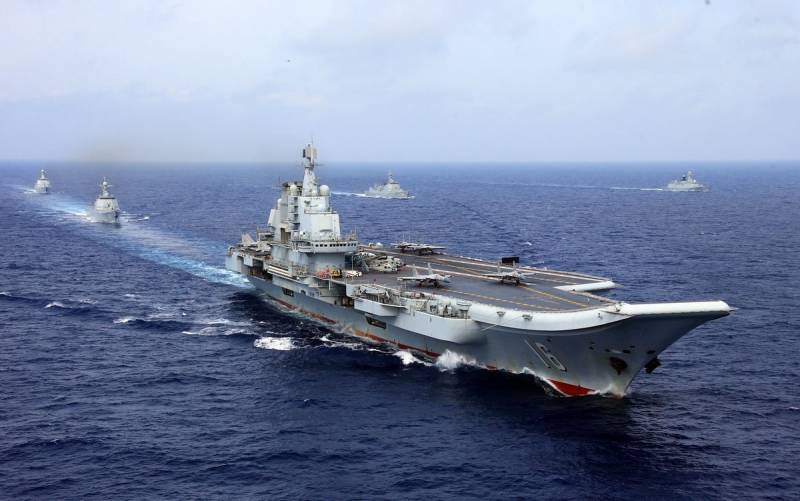
One funny article on the Internet prompted me to raise this topic. It expressed open sadness about the fact that “...instead of us, the Chinese are going to drive American aircraft carriers.”
I didn’t like the presentation of the material itself, primarily because it actually amounts to outright fraud. Let's try to honestly and impartially consider the current situation, even though in it Russia is assigned the role of not even an extra, but a spectator in the third row.
American aircraft carriers
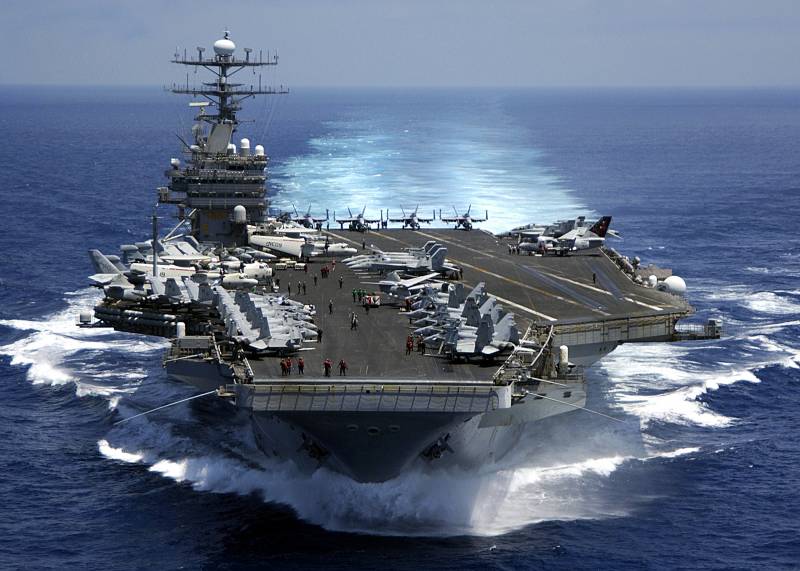
Let’s admit, this is already a classic, which has become something unshakable - a point of tension in the world and an American carrier strike group hanging out there. The USA became the rulers of the seas during the Second World War and did not give the crown to anyone else.
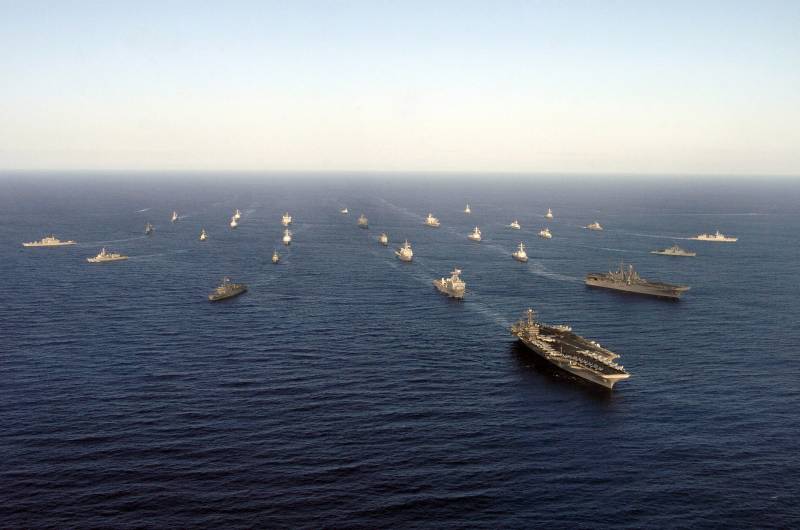
The aircraft carrier has shown itself to be simply an excellent option for projecting power into a certain area of the world, the main thing is that the surface of the world’s oceans allows it to deliver aircraft there, and they would have already done the rest. And where there are no American military bases nearby (although it is worth noting that there are fewer and fewer such lovely corners on the world map), all the necessary processes for establishing democracy are taken over by the AUG.
The carrier strike group is a very balanced fist, capable of much. 80-100 aircraft for various purposes, ships with cruise missiles (usually one Ticonderoga-class cruiser and 1-3 Arleigh Burke destroyers), capable of firing a salvo of almost a hundred Tomahawks - this is serious. Even though the Tomahawks are somewhat outdated today. They will take it en masse; events in Israel and Ukraine have already proven that even outright junk in sufficient quantities can overload and penetrate any, even modern, air defense system.
Who "chased" American aircraft carriers?
No one. In reality, American ships fled more than 80 years ago, from the Japanese fleet и aviation, in World War II. Afterwards, alas, there were no competitors left. The only one who could really oppose the US Navy with something was the fleet created by the master of the seas of the Soviet Union, Admiral of the Fleet Sergei Georgievich Gorshkov.

The greatest naval commander of modern times stories countries that deserve to stand in the same historical order with Lazarev, Nakhimov, Kornilov, Istomin, Ushakov.
Recent events related to the fact that American sailors experienced discomfort and tension in certain parts of their bodies were associated exclusively with the actions of the USSR Navy and Naval Aviation of the USSR Navy.
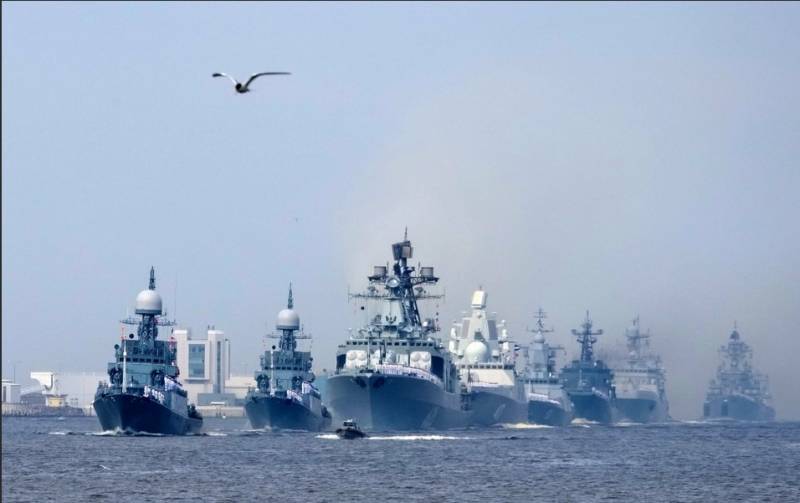
Flights of bombers at ultra-low altitudes, travel of submarines undetected within the formation of ship groups, piles of border incidents - all this remained there, abroad, after which the 30-year history of the new Russia began. And at the same time, the history of the mighty Soviet fleet ended, the remnants of which, let us pay tribute, still form the basis of the power of the Russian Navy.
Today, the Russian Navy has no idea of the ability to operate in the far sea zone. Of course, from the Northern and Pacific fleets it will be possible to assemble a group of “last voyage” ships in the amount of 2 cruisers, 3-4 destroyers and the same number of BODs, which became frigates, and send them somewhere, but it is not a fact that they will even get there. The history of the repairs of the missile cruiser "Moskva" and the TAVKR "Admiral Kuznetsov" reasonably allows us to doubt this.
Yes, in the future Russia has very decent frigates. At the global level, and in some ways superior to their colleagues, but a frigate is not a ship for operations in the ocean. And frigates, no matter how luxurious they are (and the 22350M are simply excellent ships), do not chase aircraft carriers.

However, we have already said so much about the problems and systemic crisis of the Russian fleet that it is not even worth repeating. Let's just summarize: other than individual ships capable of carrying out operations at a considerable distance from Russian bases, the Russian fleet has nothing that could be opposed to the American fleet. The US Navy has an almost tenfold advantage in the number of ships, but we will simply sadly remain silent about the DMZ ships.
Who will take the challenge?
Really, who can take on the challenge? Of course, only China. All other dynamically developing fleets such as Indian, South Korean and Japanese are on the other side. More precisely, the Japanese and South Korean ones are allies of the United States, and the Indian one is on its own, but more against China, since they are competitors in the region. In everything.
Only the PLA Navy remains.
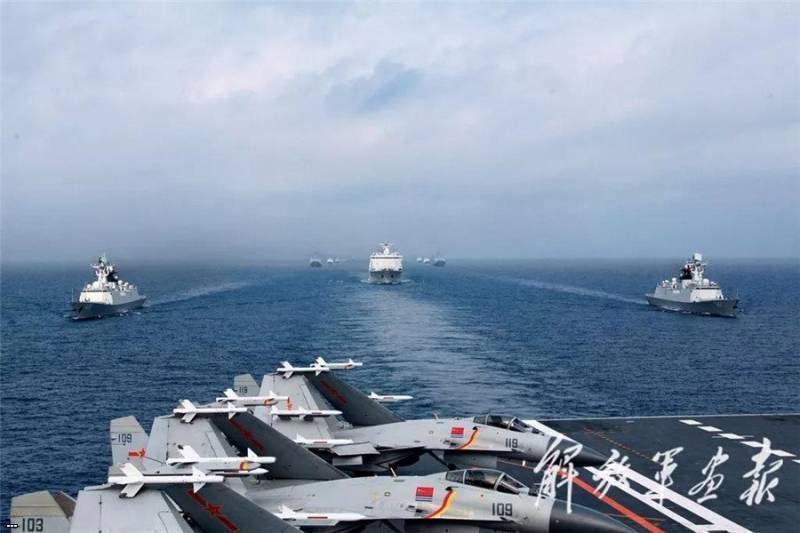
And today this fleet is able to unconditionally (based on its roster) resolve any security issues off its shores. This is a completely modern fleet, equipped with quite effective ships and in simply impressive numbers. Aircraft carriers (2), helicopter carriers (3), destroyers (40+), frigates (40+), corvettes (50), missile boats (60+), diesel-electric submarines (40+) and nuclear submarines capable of meeting the enemy at distant approaches in the ocean.
And this fleet is not concentrated on the coast of China, no! China is actively building bases abroad! Including naval ones. But we’ll talk about this separately; the picture of China’s expansion is worth it.
But the results of this policy (ships + bases) can be observed today.
When the armed conflict between Palestine and Israel began, the British The Sun spread around the world news that China has sent a detachment of ships to the region. Military, of course. The materials of the British publication asked many questions about why and where Chinese warships would go and who China would be friendly against.
But there was a very interesting nuance in this story.
It may seem strange that, speaking about the composition of the Chinese detachment, The Sun named exactly half of its ships - the guided missile destroyer Zibo, the frigate Jingzhou and the integrated supply ship Qiandaohu. Where's the other half?
Here you need to look at the leader of the detachment, the destroyer Zibo. This is a Project 052DL ship, that is, a Project 052D destroyer, modernized to carry and use CJ-10 cruise missiles, which can be used against ground targets at a distance of up to 1 km, and is also the flagship of the 500th tactical group of the PLA Navy. And this tactical group has been in the waters of the Middle East since May of this year.
What are Chinese warships doing so far from their native shores? And they are busy patrolling the Strait of Aden and the coasts of Somalia and Oman. Chinese sailors even conducted exercises with the Omani Navy. The main purpose of Chinese ships is to protect shipping in the area from pirates.
Yes, at one time Russia also indicated its presence in this area and Russian ships also fought against piracy. But then everything stalled due to the lack of funds for such expensive operations, and you yourself know how things are with the DMZ ships. And sending a heavy nuclear-powered missile cruiser to chase boats with a dozen pirates was completely out of bounds.
Here it is necessary to note the following nuance: the main reason for the existence of pirates in the region of the former Somalia should be considered... the United Nations. Merchant shipping is now completely controlled by the UN and its subsidiary, the International Maritime Organization.
It is not entirely clear for what reasons, but the IMO prohibits seafarers from resisting pirates, and shipowners from hiring private security. The UN and its structures actually forced shipowners through their legal framework to pay ransoms to pirates, and the costs, as expected, fell on consumers. The emerging committee on piracy at the UN, apart from the development of considerable budgets, could not offer anything sensible; as a result, countries were graciously allowed to protect merchant ships and patrol waters at their own expense.
And since that moment (2008), China has not left the Gulf of Aden and the surrounding areas. Since this is a zone of interests of the PRC, accordingly, Chinese warships were constantly present in the area. And in our case, it all turned out like this: as soon as the 44th Tactical Group gathered back at the base in Qingdao, from there it went out to sea... that's right, the 45th Tactical Escort Group. The group's flagship is the guided-missile destroyer Urumqi, the guided-missile frigate Linyi, and the supply ship Dongpinghu.
What does it mean? Well, not very much actually. 64 launchers on the destroyer, 32 of which can be filled with SJ-10 cruise missiles or YJ-18 anti-ship missiles, plus 8 YJ-83 anti-ship missiles on the frigate. Well, 2 more helicopters and a platoon of naval special forces.
And even if both tactical groups are united and sent, say, to the Israeli shores (which the PRC absolutely does not need), then even doubling the forces will not give the effect that could somehow influence the situation.

Why?
Yes, because at that time there were already two American aircraft carrier strike groups in the Mediterranean Sea. The first is led by the nuclear-powered aircraft carrier Gerald Ford, and the second is led by the Dwight Eisenhower. And here you can no longer count power, because two hundred planes and helicopters plus about one and a half hundred “Axes” on security ships is too big a trump card.
And if you add the British helicopter carrier Argus and the large landing ship Lyme Bay, it becomes clear that “chasing” the Americans will be very difficult. More precisely, they themselves will drive anyone away. And behind our backs we can take into account an additional reserve in the form of the fleets of Spain and Italy, which, unlike Turkey, will not support the Palestinian side.
In general, diplomacy is diplomacy, and the fleets that support this diplomacy are already in the Mediterranean. And, accordingly, a projection of power into an area where guns and not diplomats still speak.
What about Russia?
But Russia did absolutely nothing. In principle, all world powers have indicated their presence in the Mediterranean in one way or another. Except for India and Russia, everyone was noted. But India, for political and economic reasons, is very far away, literally and figuratively. And this is absolutely not her war. Therefore, the absence of the Indian fleet is justified and understandable.
But the Russian presence would be understandable and justified no less than the Indian absence. We have our own base in the region, a country with which Russia has more than ambiguous relations, that is, Syria. And in Syria there is... well, not a full-fledged naval base, but still. And near it, moreover, in close proximity, such events are unfolding.
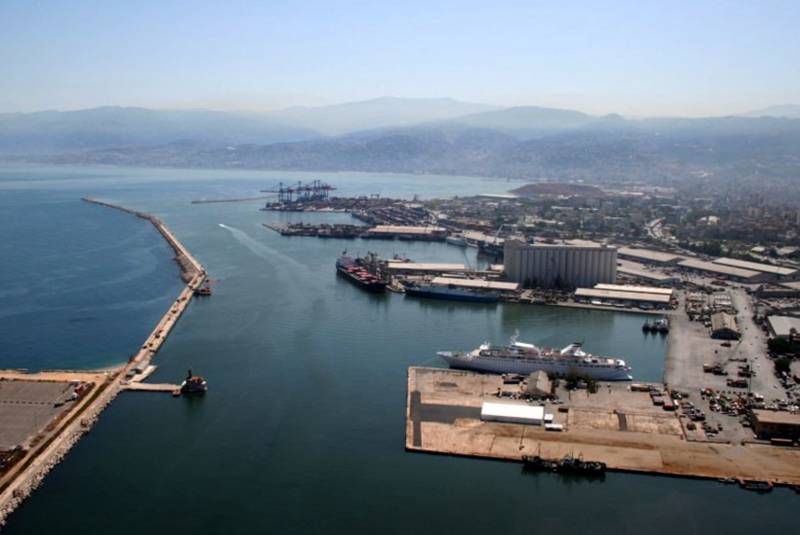
And it’s as if there aren’t really any of our people there.
In general, I would like to believe that in the Mediterranean Sea, not far from the scene of events, there are at least a couple of our submarines with cruise missiles. Even when the United States and its comrades smashed Yugoslavia to pieces in 1999, by the way, without any sanctions from the UN at all, even then the missile cruiser Kursk arrived in the Mediterranean Sea from the Northern Fleet. Naturally, he did not help Yugoslavia in any way, but he was still there. A gesture of powerlessness, of course, but that’s all that Russia was capable of twenty years ago.
I would like to believe that our boats are there and they are keeping an eye on the situation. Unfortunately, it is very difficult to control it.
Surface ships... On the one hand, today in Tartus, compared to the beginning of the XNUMXs, there is simply unprecedented excitement, on the other...
Small rocket ship "Orekhovo-Zuevo" project 21631M with "Calibers". Yes, diesel-electric submarine "Krasnodar" of project 636.6, also with "Caliber". All. Of course, this is more than nothing, but there is no striking power here. 8 “Calibers” for MRKs, 6 “Calibers” for diesel-electric submarines. Total 14. With such a number, there is no need to talk about controlling the situation, alas.
The rest of the group's ships in Syria, alas, are not fighters. Minesweeper "Vladimir Emelyanov" project 1270, anti-sabotage boats, tanker and floating workshop.
Yes, before the start of these events, the Black Sea Fleet frigate Admiral Grigorovich of Project 11356R was permanently based in Tartus, enhancing the group’s strike capabilities by a third. But four years of constant service sent the ship for repairs, the frigate was practically “driven” like a horse. And “Grigorovich” went to Kaliningrad for repairs. And the change did not come.
Everything is simple here: there is no ship in the Baltic that can really replace the frigate in Tartus. It is clear that they “survived”, but what to do, the Baltic Fleet is very sad. And the warship will not be released from the Black Sea by our “allies” the Turks, who, in accordance with the Montreux doctrine, have closed the straits to warships of Russia, Ukraine and all other countries. No, from the point of view of the law, everything is clear, but there was nothing to change the ship.
By the way, before Grigorovich, the diesel-electric submarine Novorossiysk, which also belonged to the Black Sea Fleet, left for the Baltic. And she also went for repairs, and then, apparently, when finished, she will return to Tartus again, because the Turks will not let her into the Black Sea. The repairmen promise to release the boat in April-May next year, so that reinforcements will come to Syria.
Of course, one diesel-electric submarine is not very serious. In general, Russia’s presence in the Mediterranean clearly demonstrates that this region is not in our sphere of interests. Or not quite in the field.
The answer to the question whether it would be worthwhile to send ships to the Mediterranean Sea from the North or the Pacific Ocean already has its own answer. It wasn’t worth it, so they didn’t send anyone there. Not just our war, but jostling with the Americans - that way they will still bring in more ships.
But it would be interesting to look at the possibilities in the case of “What if.” In case the conflict develops into something more and the fighting begins to really approach Tartus? What to do, remove the ships from there, throw everything to be torn to pieces by this, or vice versa, sweep everyone into the sea with a luxurious steel broom?
Of course, it's a matter of time. The journey from Vladivostok to Severomorsk does not take a couple of days. You may not have time. But what if, indeed, “tomorrow the war” for Syria breaks out again with renewed vigor?
But the trouble is, the situation is very difficult: not all ships capable of such transitions will be able to go to sea and arrive in Tartus. From Severomorsk to Tartus it is almost 10 km. From Vladivostok – 000 km. And who, if something happens, can come to the rescue?
TAVRK "Admiral Kuznetsov" - now in eternal repair.
TARK "Peter the Great" - last time was on a campaign in 2017. It seems to be waiting in line for repairs or disposal.
TARK "Admiral Nakhimov" - under repair with an uncertain result.
That is, both of the most powerful surface ships in the world are not good for anything yet. Smaller brothers, “Atlantas” of Project 1164?
For some reason, the cruiser “Varyag” was sent to the Chukchi Sea for the “Finval-2023” exercise. “Marshal Ustinov” was also engaged in combat training together with the destroyer “Admiral Ushakov” (formerly “Fearless” of Project 956). Cannons were fired in the Barents Sea. The BPK "Vice Admiral Kulakov" together with the BDK "Alexander Otrakovsky" and a group of support ships carried out training tasks in the Arctic zone.
Exercises, crew training, testing new conditions and new techniques - this is useful, it is necessary. Without this, it is simply impossible to properly prepare crews for combat conditions. And on the one hand, a complete understanding of what is happening, and on the other, an understanding that the resource of the ships, which are all over 30 years old, is not endless.
You know, the same “Admiral Ushakov” and “Persistent” are the last of the Project 956 “Sarych” family. The remaining representatives of this class have already been written off and disposed of. The main problem of these ships was the boiler-turbine power plant, which was not the most successful design. It was thanks to the Sarychi power plant that they disappeared from the scene so quickly. Therefore, today, despite all the repairs, the Sarychs do not move far from the bases. And even more so to the Mediterranean Sea.
As a result, there are no heavy cruisers, missile cruisers are also in question, and there are no destroyers. There are frigates and BODs that became frigates. And the incomprehensible fate of the same “Peter the Great”, which took a strange turn after calculating the costs of restoring the “Admiral Nakhimov”. It smelled like recycling, and in full force.
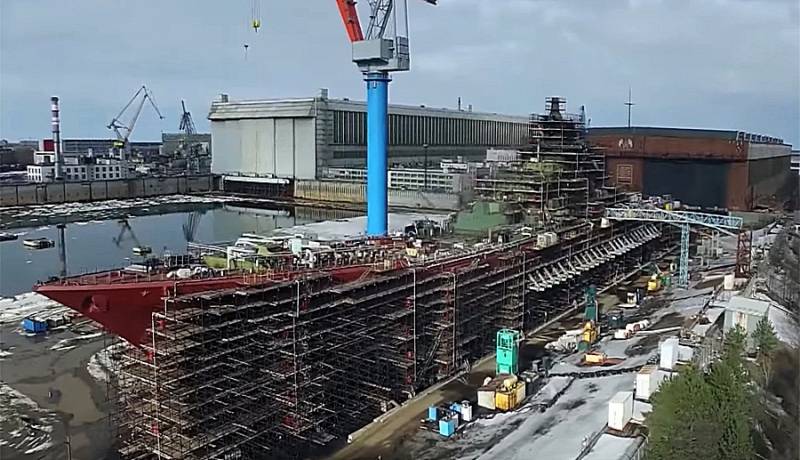
In general, the topic of “flag demonstrations” on distant shores can be considered completely closed. Although we have ardent supporters of the need to build DMZ ships and demonstrate something like that, the reality, alas, is that our fleet will have nothing to send to protect its own interests in Syria if such a need arises. Frigates, corvettes and small missile ships are not very suitable for the role of “resolvers”, especially when it comes to confronting real strike groups of ships.
So we can say, it’s good that we do not have our own interests in Israel and Palestine. It might not have turned out very nice.
And the stories about how the Soviet fleet chased American aircraft carriers... They will remain history and very soon will turn into the category of tales on Zen. And who will be interested in legends and myths about how sailors and naval pilots of a long-collapsed country successfully resisted the US fleet on the seas and oceans?
But such stories tend to be forgotten. What is the use of them if today the Black Sea Fleet does not have such a ship composition that could ensure control over the Black Sea in terms of transporting goods through it to and from Ukrainian ports. And this would be much more important than a showdown with the Americans off the coast of Syria. This could save the lives of Russian military personnel in the Northern Military District, since there is confidence that it is in Odessa that help comes from Western aides of Ukraine.
The picture is not that sad, but rather natural. The Russian Navy today is not able to protect the interests of the country somewhere on distant shores. And if someone will now “chase” American aircraft carriers, it will definitely not be Russian ships. Chinese? Perhaps in this regard, the organization of all processes of the PLA Navy works like clockwork. Another question is that China does not have the same interests in the Middle East as the United States. Not yet. But in the future - why not? Chinese destroyers and frigates will be able to have their say in the confrontation with the American fleet, as Soviet ships once did.
Information